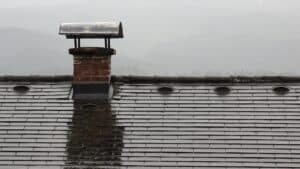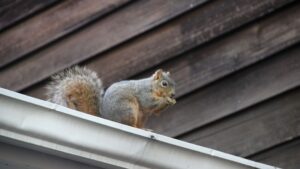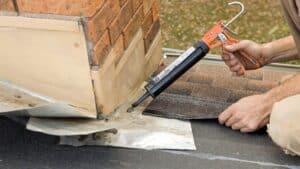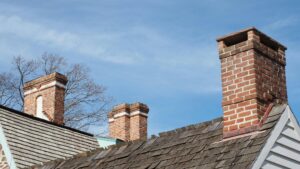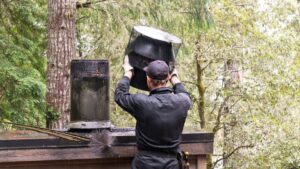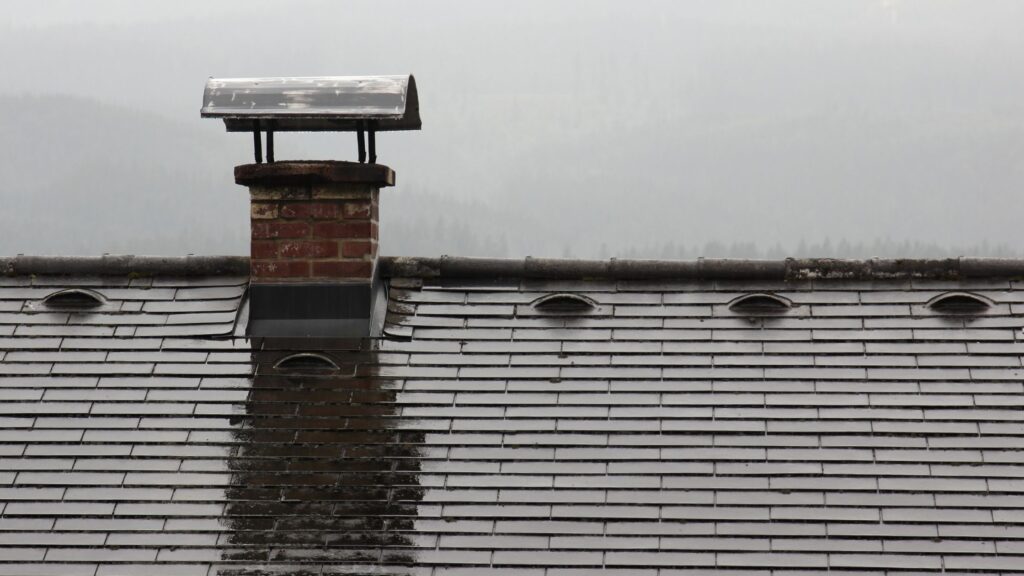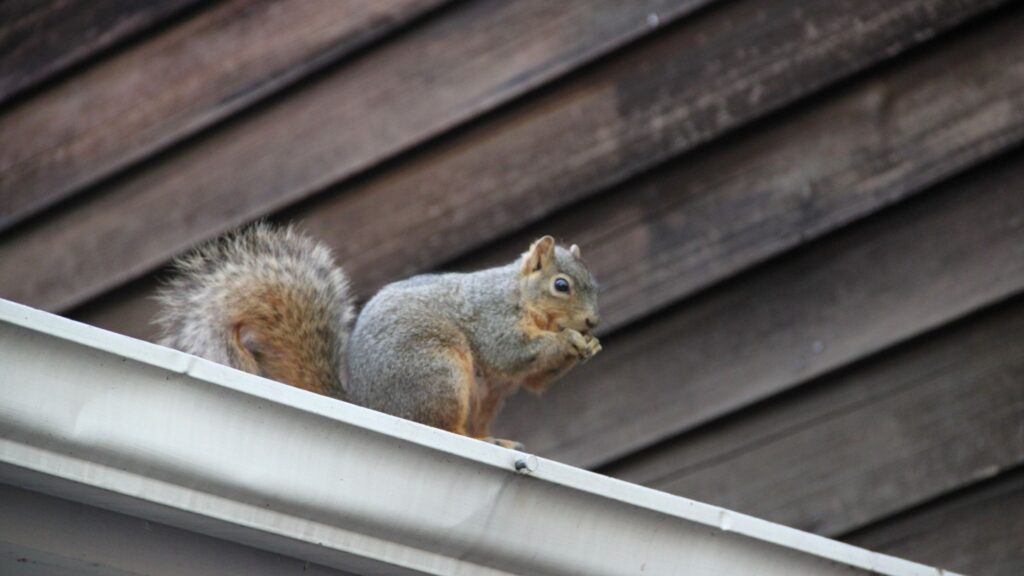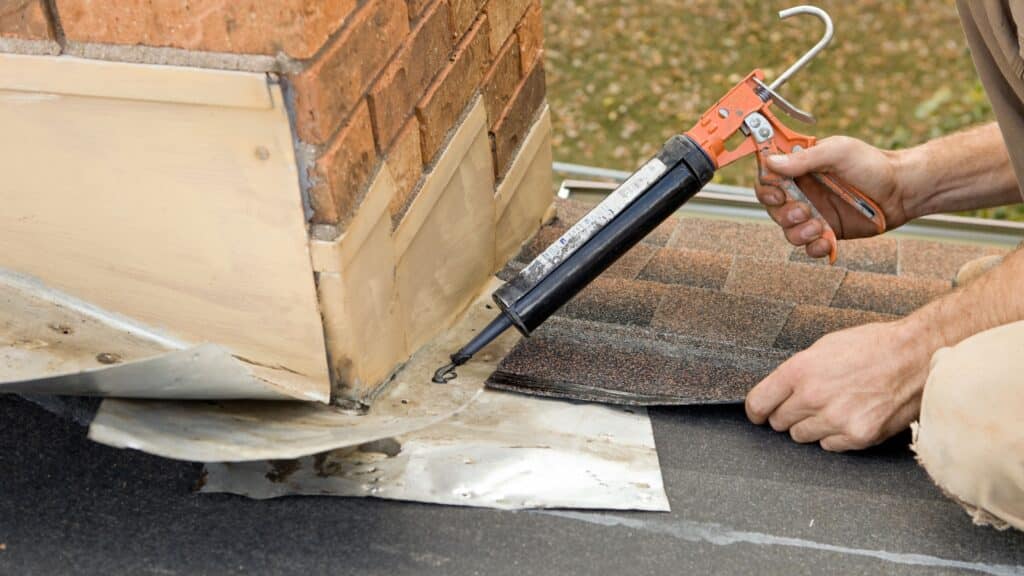As spring rain returns to the Hudson Valley, many homeowners in Catskill start noticing unwanted signs of chimney leaks—whether it’s stains on the ceiling, water near the fireplace, or a musty odor. A leaking chimney is more common than you think and can lead to serious problems like structural damage, mold, and costly interior repairs.
Fortunately, with proper repair and prevention, chimney leaks can be solved. This guide covers the most common causes of chimney leaks, how to spot the signs early, and the best ways to protect your home moving forward.
What Causes Chimney Leaks?
Chimney systems have multiple components that can wear out or break down over time. The most frequent causes of leaks include:
- Cracked Chimney Crown: Freeze-thaw cycles can cause cracks in the crown, allowing water to seep in from the top.
- Missing or Damaged Chimney Cap: Without a cap, rain can fall directly into your flue.
- Failed Flashing: Flashing seals the joint between your chimney and roof. When it becomes loose or rusted, leaks can form at the roofline.
- Deteriorated Brick and Mortar: Masonry is porous and will absorb water over time, especially when mortar joints begin to crumble.
- Worn Mortar Joints: Gaps between bricks allow moisture into the structure and interior of your home.
How to Spot a Chimney Leak
Not all leaks are immediately visible. Here are common indicators that your chimney might be leaking:
- Water stains or damp patches near the fireplace
- A musty smell or moisture inside the firebox
- Rust on the damper or fireplace doors
- Dripping sounds during or after rainfall
- White staining (efflorescence) on the outside of the chimney
If you notice any of these issues, schedule a chimney inspection with a certified professional.
Chimney Leak Repair Options
Depending on the source of the problem, a professional may recommend one or more of the following repairs:
- Crown Repair or Replacement: Minor cracks can be sealed, while more severe damage may require reconstruction.
- Chimney Cap Installation: A new stainless steel or copper cap will keep rain, snow, and animals out.
- Flashing Repair: Loose or deteriorated flashing can be resealed or replaced to stop roofline leaks.
- Tuckpointing & Brick Repair: Replacing failing mortar joints and bricks restores both strength and waterproofing.
- Waterproofing Treatment: A breathable sealant helps block moisture from entering while allowing existing water to escape.
Preventing Future Chimney Leaks
Preventive maintenance is your best defense against chimney leaks. Here’s how to stay ahead:
- Schedule annual chimney inspections to detect early signs of damage.
- Keep your chimney cap in place and in good condition.
- Repoint mortar joints every few years to prevent moisture intrusion.
- Apply waterproofing sealant every 5–7 years.
- Check and repair flashing after major storms or snowfall.
Why Catskill Homeowners Choose True Ventilation
At True Ventilation, we’ve helped hundreds of homeowners in Catskill and across the Hudson Valley protect their chimneys from leaks and water damage. Our services include:
- Comprehensive chimney inspections
- Flashing and crown repairs
- Masonry and tuckpointing work
- Chimney cap installation and replacement
- Professional waterproofing treatments
Ready to protect your home? Contact us today or call 888-775-9498to schedule your chimney repair in Catskill.
Conclusion
Don’t let a leaky chimney lead to bigger problems. Whether it’s a simple fix or a more involved repair, taking care of chimney issues in the spring will protect your home and save you money. True Ventilation is here to help with inspections, repairs, and preventative solutions tailored to your chimney’s condition.
People Also Ask
- What is the most common cause of a chimney leak?
The most common causes include failed flashing, cracked crowns, and missing caps—all of which allow water intrusion. - How do I know if my chimney is leaking?
Signs include water stains near the fireplace, rust, musty odors, and visible damage to masonry. - Can a chimney leak cause mold?
Yes, trapped moisture can lead to mold growth in your attic, walls, or around the fireplace if not resolved quickly. - How much does it cost to fix a leaky chimney?
Repairs vary based on the cause—minor flashing repairs may cost a few hundred dollars, while crown rebuilds or extensive waterproofing could cost more.




